
Photo by Shutterstock.
Writer-farmer Wendell Berry reminds city dwellers that “eating is an agricultural act.” For many, vacationing has followed suit. Whether you’re bed and breakfasting it on the farm, biodieseling to a beach picnic, or touring the eco-vineyards of South Africa this year, you’ll need a sustainable food book or two for the journey.
Here we rounded up to a list of some of our favorites — all released this year and ready for the beach, farm, road trip, or wine trail.
 1. In Change Comes to Dinner: How Vertical Farmers, Urban Growers, and Other Innovators Are Revolutionizing How America Eats, Katherine Gustafson goes on what she calls a “hoperaking” tour of sustainable food operations. Gustafson paints with Michael Pollan-esque strokes, managing to extrapolate broad ideas about meat monopolies and consumer appetites from the passenger seat of a school-bus-turned-mobile-farmers-market or the edge of an aquaponic tilapia tank. Casual summer readers might glide past the statistics and commentary en route to the quirky stories of eco-entrepreneurs, but it’s nice to know they’re there for later reference. This paperback will fit perfectly into a frame pack or beach tote, and the casual tone keeps it light.
1. In Change Comes to Dinner: How Vertical Farmers, Urban Growers, and Other Innovators Are Revolutionizing How America Eats, Katherine Gustafson goes on what she calls a “hoperaking” tour of sustainable food operations. Gustafson paints with Michael Pollan-esque strokes, managing to extrapolate broad ideas about meat monopolies and consumer appetites from the passenger seat of a school-bus-turned-mobile-farmers-market or the edge of an aquaponic tilapia tank. Casual summer readers might glide past the statistics and commentary en route to the quirky stories of eco-entrepreneurs, but it’s nice to know they’re there for later reference. This paperback will fit perfectly into a frame pack or beach tote, and the casual tone keeps it light.
 2. Taking Food Public: Redefining Foodways in a Changing World, edited by Psyche Williams-Forson and Carole Counihan, is an anthology of scholarly food writing. Though chock full of citations and academic language, many of the pieces read more like brainy Harpers articles than those in academic journals. And some selections roll up to sustenance-and-society intersections — say, soul food and Sunni Islam — that will make even the most well-read foodies sit up in their Adirondack chairs.
2. Taking Food Public: Redefining Foodways in a Changing World, edited by Psyche Williams-Forson and Carole Counihan, is an anthology of scholarly food writing. Though chock full of citations and academic language, many of the pieces read more like brainy Harpers articles than those in academic journals. And some selections roll up to sustenance-and-society intersections — say, soul food and Sunni Islam — that will make even the most well-read foodies sit up in their Adirondack chairs.
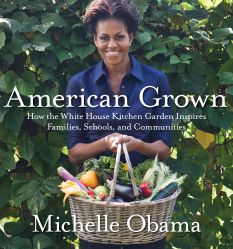 3. American Grown: The Story of the White House Kitchen Garden and Gardens Across America comes directly from the first lady. Neatly steering clear of politics, Michelle Obama takes readers through the inaugural years of the garden on the South Lawn. Color photographs of lush plants and plum-cheeked kids splash across many of its pages. The book radiates beyond the garden’s three-year history, though, veering back to White House gardens gone by and the FLOTUS’ own family history, then looking ahead to her nonpartisan plans to curb childhood obesity. If you’re looking for a light read, this graphic-heavy book includes a two-page spread featuring a yellowed map of Thomas Jefferson’s garden on the right and a picture of a panting Bo on the left. In other words, it’s the perfect indulgence for vacation-induced ADHD.
3. American Grown: The Story of the White House Kitchen Garden and Gardens Across America comes directly from the first lady. Neatly steering clear of politics, Michelle Obama takes readers through the inaugural years of the garden on the South Lawn. Color photographs of lush plants and plum-cheeked kids splash across many of its pages. The book radiates beyond the garden’s three-year history, though, veering back to White House gardens gone by and the FLOTUS’ own family history, then looking ahead to her nonpartisan plans to curb childhood obesity. If you’re looking for a light read, this graphic-heavy book includes a two-page spread featuring a yellowed map of Thomas Jefferson’s garden on the right and a picture of a panting Bo on the left. In other words, it’s the perfect indulgence for vacation-induced ADHD.
4. 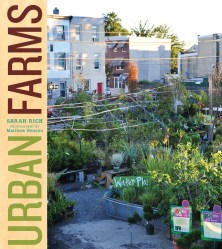 Urban Farms, by Food Print co-founder Sarah Rich, profiles 16 food operations that feed cities from New York to Los Angeles. Employing an anthropological eye, Rich and photographer Matthew Benson highlight a diverse combination of agriculture and urban landscapes. Like American Grown, Urban Farms’ magazine-like feel complements distracting vacation locales. The heft of the hardcover volume (and some of its marketing) suggest resting it on a coffee table rather than a beach blanket. But carrying it along is worth it. Check out our interview with Sarah Rich.
Urban Farms, by Food Print co-founder Sarah Rich, profiles 16 food operations that feed cities from New York to Los Angeles. Employing an anthropological eye, Rich and photographer Matthew Benson highlight a diverse combination of agriculture and urban landscapes. Like American Grown, Urban Farms’ magazine-like feel complements distracting vacation locales. The heft of the hardcover volume (and some of its marketing) suggest resting it on a coffee table rather than a beach blanket. But carrying it along is worth it. Check out our interview with Sarah Rich.
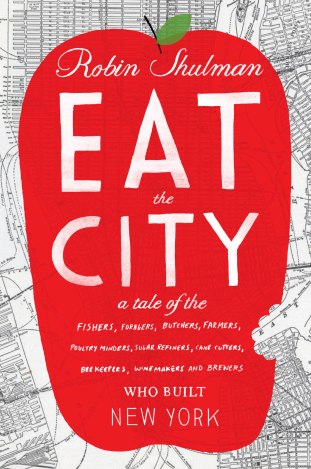 5. In Eat the City: A Tale of the Fishers, Foragers, Butchers, Farmers, Poultry Minders, Sugar Refiners, Cane Cutters, Beekeepers, Winemakers, and Brewers Who Built New York, Robin Shulman dives into the history of New York City and finds food at its core. In each chapter Shulman interweaves stories of food production past and present — from cow herding in Manhattan to sugar cane farming in the Bronx and butchery in Brooklyn. Shulman introduces her readers to an array of characters from a wide variety of backgrounds proving that today’s obsession with where our food comes from is not a trend but a return to something fundamental — even in the most urban environments. Read our interview with Shulman.
5. In Eat the City: A Tale of the Fishers, Foragers, Butchers, Farmers, Poultry Minders, Sugar Refiners, Cane Cutters, Beekeepers, Winemakers, and Brewers Who Built New York, Robin Shulman dives into the history of New York City and finds food at its core. In each chapter Shulman interweaves stories of food production past and present — from cow herding in Manhattan to sugar cane farming in the Bronx and butchery in Brooklyn. Shulman introduces her readers to an array of characters from a wide variety of backgrounds proving that today’s obsession with where our food comes from is not a trend but a return to something fundamental — even in the most urban environments. Read our interview with Shulman.
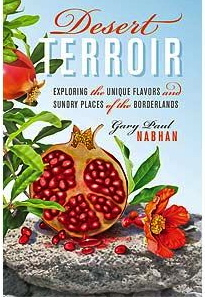 6. If the term terroir — “the taste of place” — doesn’t conjure up images of the desert for you, you’re probably not alone. Agricultural ecologist and ethnobotanist Gary Paul Nabhan wants to change that with Desert Terroir: Exploring the Unique Flavors and Sundry Places of the Borderlands. In this short collection of essays, Nabhan invites his readers along in search of wild oregano, the long-horned Corriente cows of New Mexico, and Covina on the Baja Peninsula. Nabhan also shares his own work as a gardener and orchardist to bring foods grown in dry, southern counties up into the cooler hills where they might survive the next several decades of climate change, making himself an active participant in the ever-changing desert terroir. This an inspiring book by a man who knows the land he lives on intimately and a must-read for anyone who grows their own food or one day hopes to.
6. If the term terroir — “the taste of place” — doesn’t conjure up images of the desert for you, you’re probably not alone. Agricultural ecologist and ethnobotanist Gary Paul Nabhan wants to change that with Desert Terroir: Exploring the Unique Flavors and Sundry Places of the Borderlands. In this short collection of essays, Nabhan invites his readers along in search of wild oregano, the long-horned Corriente cows of New Mexico, and Covina on the Baja Peninsula. Nabhan also shares his own work as a gardener and orchardist to bring foods grown in dry, southern counties up into the cooler hills where they might survive the next several decades of climate change, making himself an active participant in the ever-changing desert terroir. This an inspiring book by a man who knows the land he lives on intimately and a must-read for anyone who grows their own food or one day hopes to.
 7. Are you looking to get caught up on the state of seafood and the world’s oceans without reading a huge stack of books? Ocean of Life is your ticket. And, it turns out, Callum Roberts, a well-respected professor of marine preservation, can also tell a good story! Collum details the escalating problems associated with bottom trawling, overfishing, noise pollution, an ocean warmed by climate change, and the resource-intensive practice of fish farming — but uses strong imagery and engaging narratives that will keep you following along, despite the bad news. He also lays out a plans for “a New Deal for the Oceans,” arguing for a sudden, global-scale response to a crisis that has been invisible to many of us for too long. Ocean of Life isn’t the lightest book (in either sense of the word), but if you’re the type to use your vacation to get caught up on important reading you don’t have time to do otherwise, this book is for you.
7. Are you looking to get caught up on the state of seafood and the world’s oceans without reading a huge stack of books? Ocean of Life is your ticket. And, it turns out, Callum Roberts, a well-respected professor of marine preservation, can also tell a good story! Collum details the escalating problems associated with bottom trawling, overfishing, noise pollution, an ocean warmed by climate change, and the resource-intensive practice of fish farming — but uses strong imagery and engaging narratives that will keep you following along, despite the bad news. He also lays out a plans for “a New Deal for the Oceans,” arguing for a sudden, global-scale response to a crisis that has been invisible to many of us for too long. Ocean of Life isn’t the lightest book (in either sense of the word), but if you’re the type to use your vacation to get caught up on important reading you don’t have time to do otherwise, this book is for you.
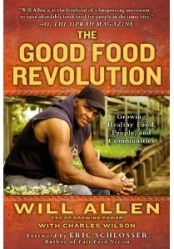 8. Celebrity farmer and MacArthur laureate Will Allen relates his urban agriculture adventures in The Good Food Revolution: Growing Healthy Food, People, and Communities. Even if you’ve read about the man and the story, get this book for his telling of it. The one-time Proctor and Gamble executive opens with his mother moving two young sons to a city she has never seen, joining the “Great Migration” of African Americans from the Jim Crow South. He goes on to quote Maya Angelou and Martin Luther King, Jr., and later tells how he helped a former Goldman Sachs analyst start a composting service. Oh yeah, and somewhere in there Allen transforms the lives of inner-city Milwaukee residents with Growing Power. If the poignancy of the facts alone doesn’t move you, consider the language: “[T]he desire to farm … hid in my feet,” writes this son of share-croppers.
8. Celebrity farmer and MacArthur laureate Will Allen relates his urban agriculture adventures in The Good Food Revolution: Growing Healthy Food, People, and Communities. Even if you’ve read about the man and the story, get this book for his telling of it. The one-time Proctor and Gamble executive opens with his mother moving two young sons to a city she has never seen, joining the “Great Migration” of African Americans from the Jim Crow South. He goes on to quote Maya Angelou and Martin Luther King, Jr., and later tells how he helped a former Goldman Sachs analyst start a composting service. Oh yeah, and somewhere in there Allen transforms the lives of inner-city Milwaukee residents with Growing Power. If the poignancy of the facts alone doesn’t move you, consider the language: “[T]he desire to farm … hid in my feet,” writes this son of share-croppers.
They wanted the moist earth beneath them. It hid in my hands. They wanted to be callused and rough and caked with soil. It hid in my heart. I missed the rhythms of agriculture.
Read our interview with Allen.



